“EUREKA!”
Some innovations are born from a stroke of luck or sudden flash of genius. If you experience your own Eureka! moment, consider yourself lucky and take the win! Simply talking through the problem with one or two people can sometimes also bear fruit. For complex problems and issues, a solution can be elusive and require more effort to sort out. That’s when it’s time to harness the power of brainstorming!
As a comprehensive product development company, Catalyst provides innovative solutions to our clients on a daily basis. And for the last 25 years, we have refined our process to efficiently overcome almost any obstacle. This structured process has proven to apply equally whether the problem requires formation of a decision, policy, protocol or tangible product. By following the 7 steps of our brainstorming process, you’ll be well on your way to generating positive outcomes.
We showcase the 7 steps in action within our video for an example problem. See how Catalyst explores a more convenient and efficient way for individuals to clean pollution and litter from coastal beaches. Then feel free to copy our notes below and tailor the process to your unique situation.
1. Define The Problem
This first step may seem obvious, yet the way you approach your goal is heavily influenced by how you look at the problem in the first place. It is absolutely essential to concisely define what the problem actually is before any brainstorming action is taken. Our VP of Product Development, Andrew Mendenhall, illustrates this point pretty well.
“We’ll set the tone to challenge people to think a little bit bigger about what they think the problem is. They might come into a session and say that they have a specific need. For instance, they may say they need a new lid for their cup. Well, that’s not really the problem they have. The real problem is that they need a better way to facilitate consumption of liquid while minimizing the chance of spilling it.”
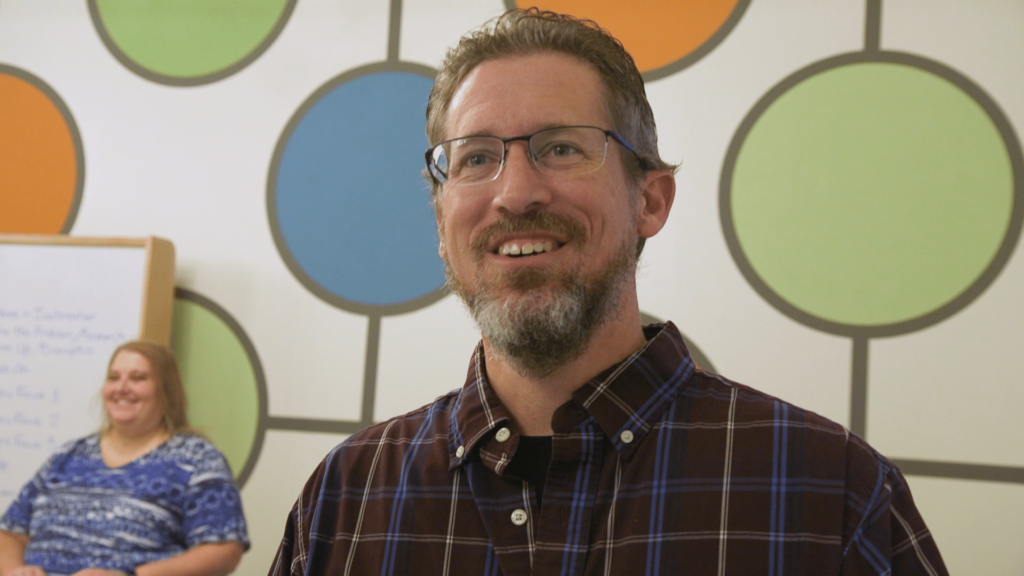
This may initially seem like a strange way to approach the perceived problem of a cup with a missing lid. However, restating the problem the way Andrew did widens the horizons of possible solutions. It helps to write down the main aspects of the problem in various ways in order to judge whether you are truly addressing the root issue.
When defining your problem statement, it’s often helpful to limit the scope of the problem to something where the solution is possible to implement. As in our example of cleaning litter from coastal beaches, the overarching problem is world-wide pollution. Solving that issue is a gigantic undertaking with many intricate factors and most likely out of reach for the foreseeable future. But addressing the problem of litter on coastal beaches is much more attainable.
Original problem statement: Pollution is a major problem all over the world.
Concise problem statement: Litter on our coastal beaches is a major problem.
Once you have a well-defined problem statement, it helps to do a little digging on the subject. It’s quite possible that someone has encountered a similar issue in the past. You may stumble upon a perfectly acceptable solution that already exists! Oftentimes, your research will not uncover a pre-existing answer but may serve as inspiration in your next steps.
2. Establish a Creative Space
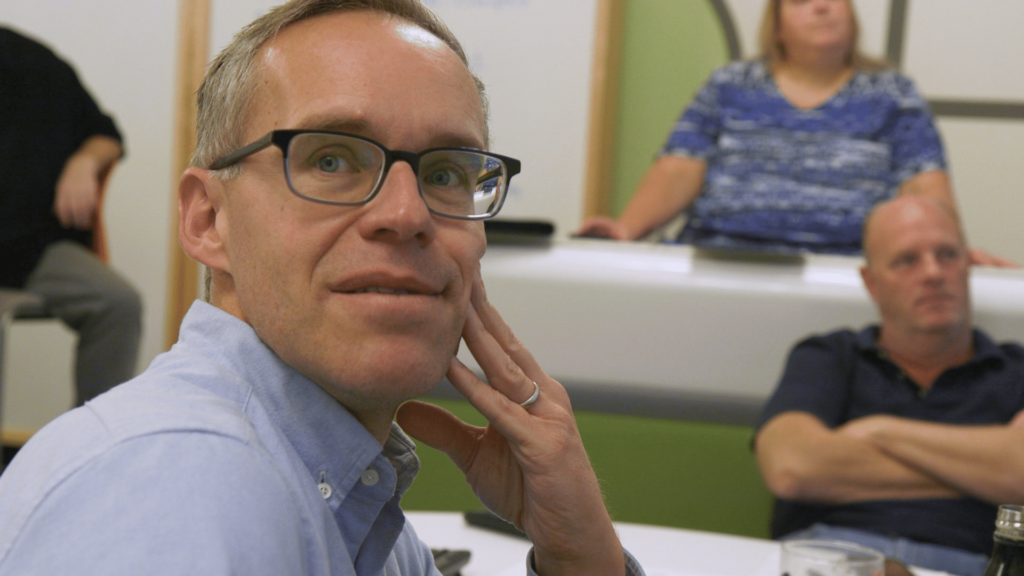
The location may seem trivial but it’s of major importance. The setting you choose is almost as important as the minds participating in the brainstorming exercise. Select a large enough location that is free from distractions and conducive to creativity. If possible, it helps to create a setting that feels somewhat unfamiliar. Simply booking out the boardroom down the hall may not help people break from their routine thoughts. This small psychological trick helps to change participants’ thought patterns to be more open to creativity. Our Lead Industrial Designer, Paul Zink, is a big proponent of getting people out of their shell.
“Take them out of their comfort zone without feeling suppressed or overwhelmed. You want them to feel expressive and creative while brainstorming. So, set up an environment that facilitates that. And make it fun! When people are having fun, the walls start to come down, the barriers break down and they can think more innovatively.”
3. Recruit a Diverse Team
Once a suitable location is established, it’s time to recruit a diverse team. Of course, this is heavily influenced by the people you have access to as well as their willingness to participate. Usually, the more, the merrier. Try to include people with a diverse set of backgrounds. According to Paul, unique life experiences will sometimes trump advanced expertise in a specific field when it comes to approaching a problem from a different perspective.
“It doesn’t matter whether you are a mechanical engineer, or you are someone who works on an assembly line. We need all those different disciplines and the more inputs we get, the better our chances of success. Anyone who is willing to actively participate can have an impact.”
Now that you have a diverse and willing brainstorming team, it’s time to assign specific roles.
Emcee
This person should have the most leadership-based personality on the team. They must effectively manage the structure and timing of the session to stay on track.
Creative Lead
Class clowns unite! Pick the one who is always popping off with a new joke or tells animated stories. Let them run with it for once. They get to set the tone for more introverted participants by facilitating icebreakers or hosting games and mental exercises to get everyone in a creative state of mind.
Record Keeper
There’s going to be a lot of notes, drawings and votes to tally. It all means nothing if you have no record of this content for future reference. Pick a detail-oriented person to fill this role.
The person who organizes the brainstorming session may also serve in one or even two of these positions. However, it’s recommended that the Creative Lead and the Record Keeper roles are filled by different people. Somebody has to keep it all straight!
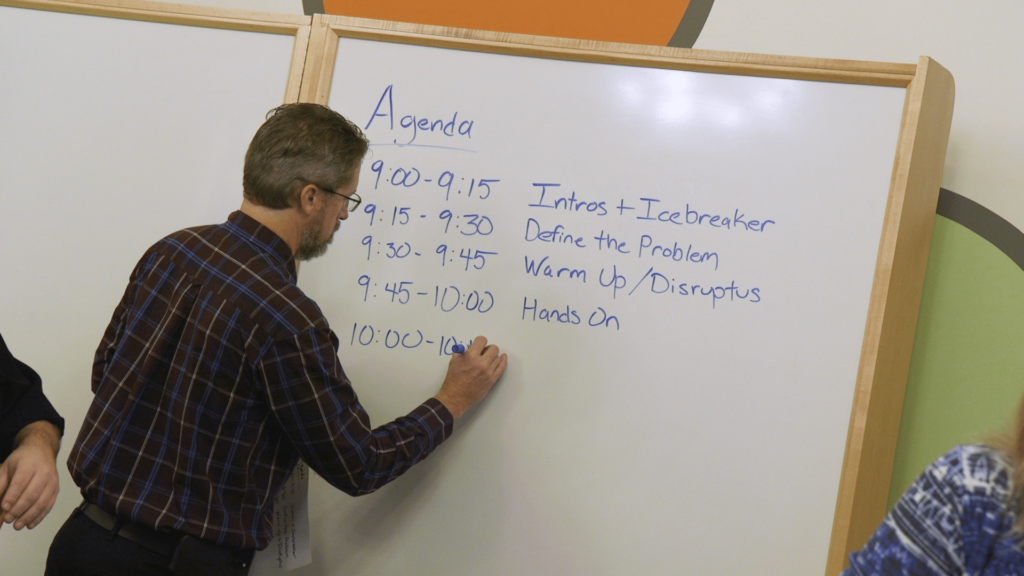
Brainstorming is all about having a balance between unbridled creativity and structure in order to produce positive outcomes. The emcee provides structure in the form of a posted agenda and timeline for the day’s activities. Let’s touch on the brainstorming agenda with a bit more from Andrew.
“The purpose of this type of brainstorming session is to facilitate an environment where people can be more creative, more open. Then you have mechanisms in place where you strategically get to certain topics that you think will build your understanding of the concepts you can take action on.
It depends on the depth of each topic as far as how much time is allocated. And sometimes the best brainstorming sessions blow the agenda out of the water because so much content is being created. But it’s good to know that you may be getting carried away and there are still other issues to address.”
4. Open Your Mind. Dream Big.
This is the step where all the planning ends and the real work begins. The Creative Lead should start the session with icebreakers to let the team get more familiar with each other. Going around the room with the usual introductions and a few personal details is the standard. Try to incorporate a fun question that everyone answers like favorite travel destinations or hobbies. It all builds a sense of camaraderie. Guided mental exercises or a few quick rounds of a game are great ways to prime the creativity pump. Paul explains why his favorite game for this purpose is DISRUPTUS.
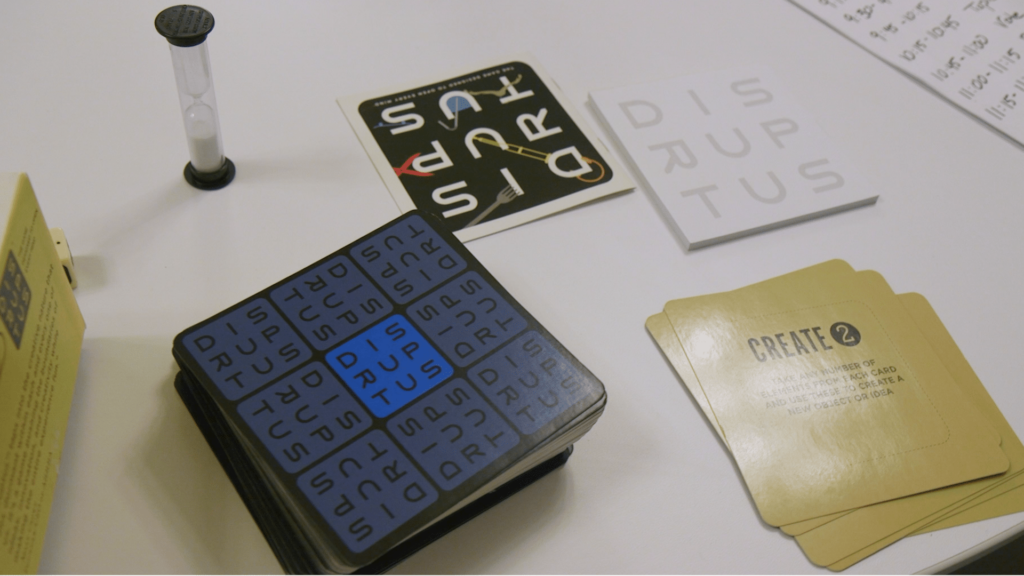
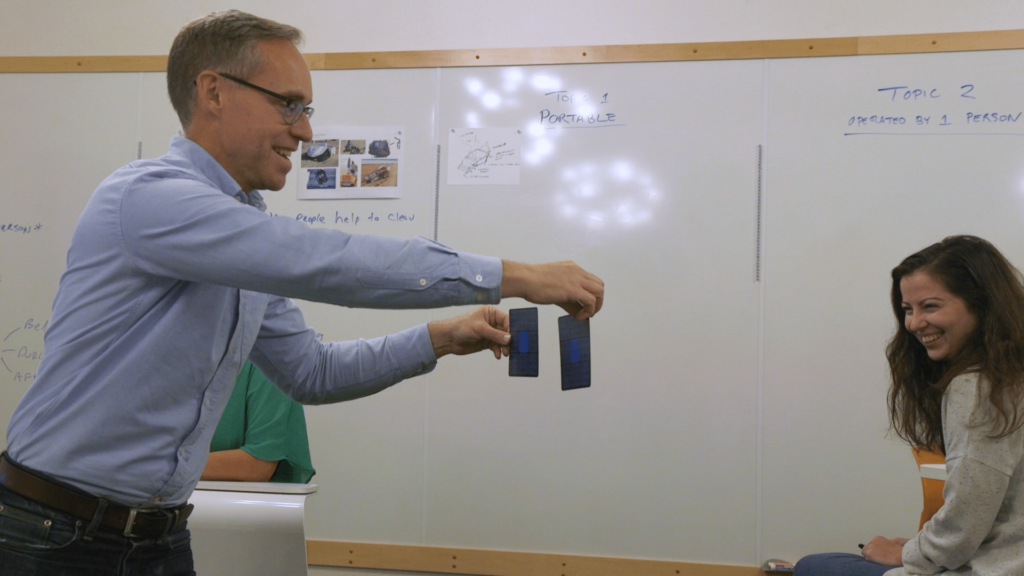
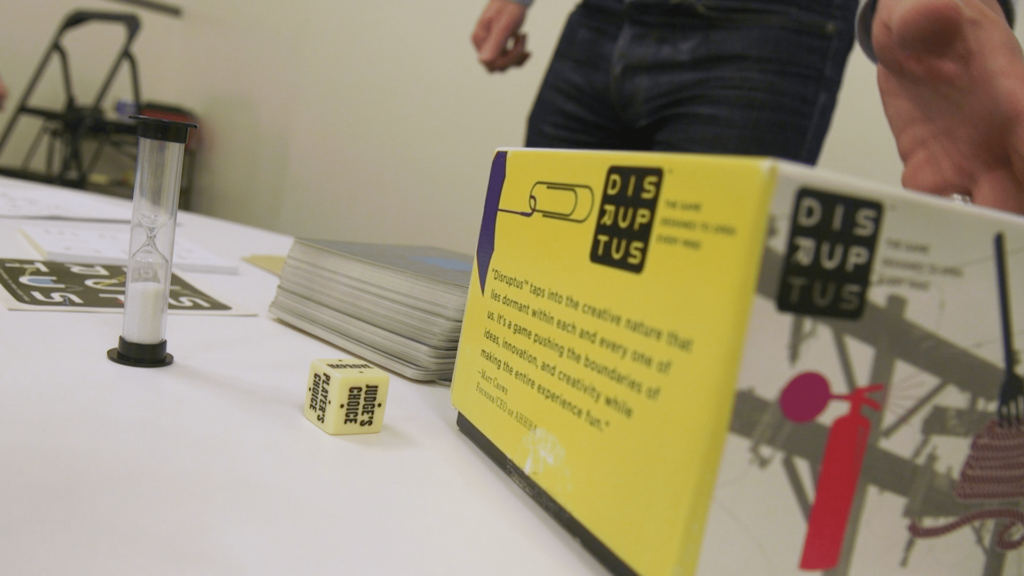
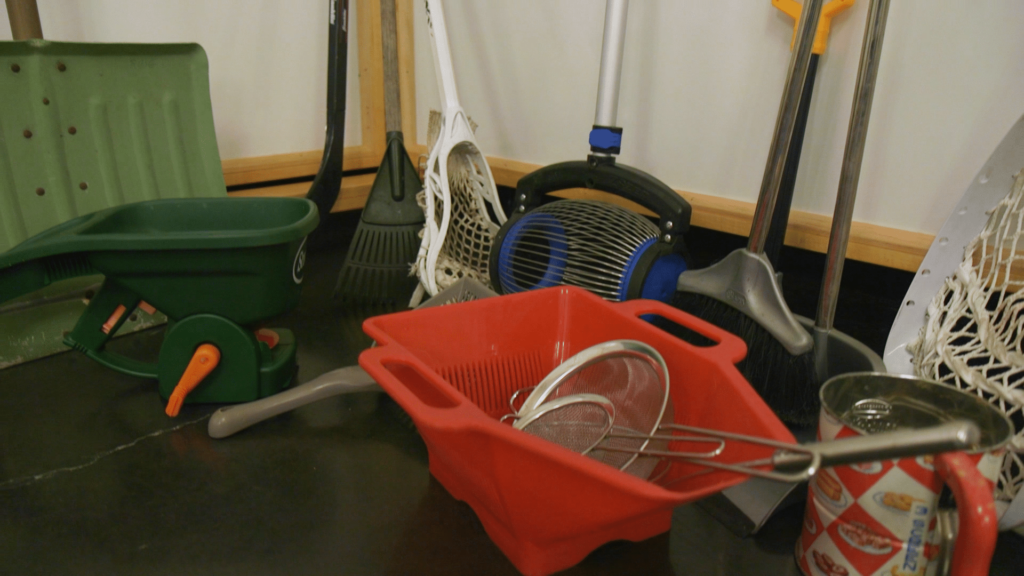
“There are some very practical things it [DISRUPTUS] achieves for us. One of those things is that it gets people look at things differently and to be comfortable with sketching. Not focusing on the quality of the sketch, but just getting ideas on paper. The second thing is that it’s time constrained to help facilitate the idea of getting ideas out there quickly and letting them go to move on to the next idea.”
In the brainstorming stage of problem solving, it’s important to get as many ideas on the table as possible versus getting every detail worked out. Be sure to choose a game or activity that gets your everyone on the team into a creative and open mindset. Even pro golfers take practice swings!
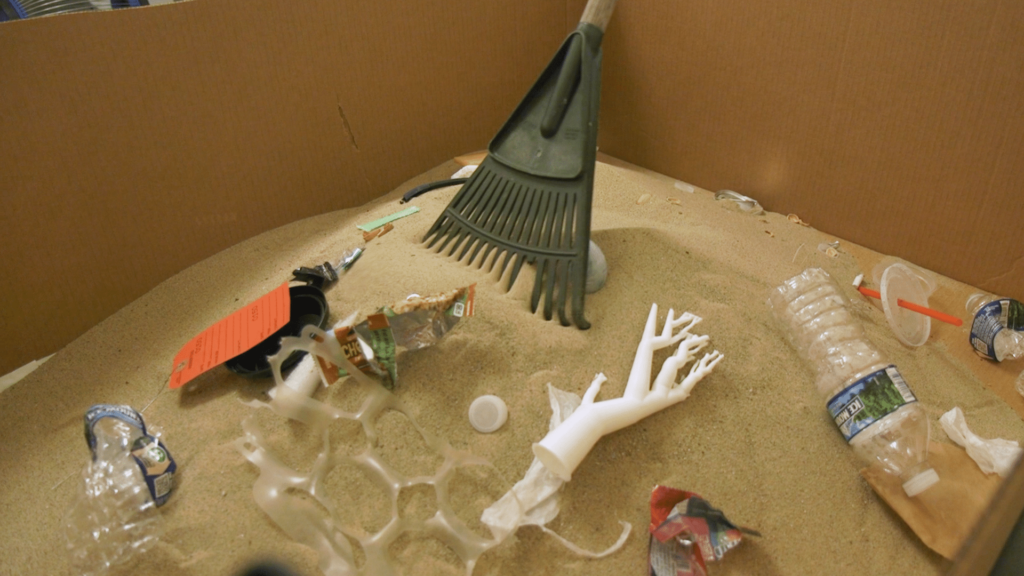
Sometimes it helps to provide physical props to hold, use and envision how certain aspects of existing tools or technology could be repurposed for your task at hand. In our video example, we played around with items ranging from cat litter scoops and flour sifters to rakes and seed spreaders. Seeing how these items performed in a sandbox filled with trash helped the team envision what may or may not work in the real world. This budget-friendly tactic helps to eliminate preconceived notions that may cost time or money down the road. Items from the back of the closet or toy bin work just fine, you never know what object might inspire that golden nugget of an idea!
5. Topic Focus
Sketch | Share | Discuss | Move On
Topic Focus can tend to become a bit chaotic and that’s ok. As the emcee, you can see this as a positive but try to keep everyone engaged in a central conversation, so no one misses out on important details.
Give some time for everyone to sketch out ideas then take turns sharing them with the group. After a quick discussion it’s time to move on to the next persons’ batch of ideas. The second or third round of sketching and discussion may be the most fruitful because people get inspired by seeing other ideas then add their own spin or improvements to those concepts. Paul makes certain that everyone understands that building off of someone’s idea is not cheating, it’s actually a solution booster!
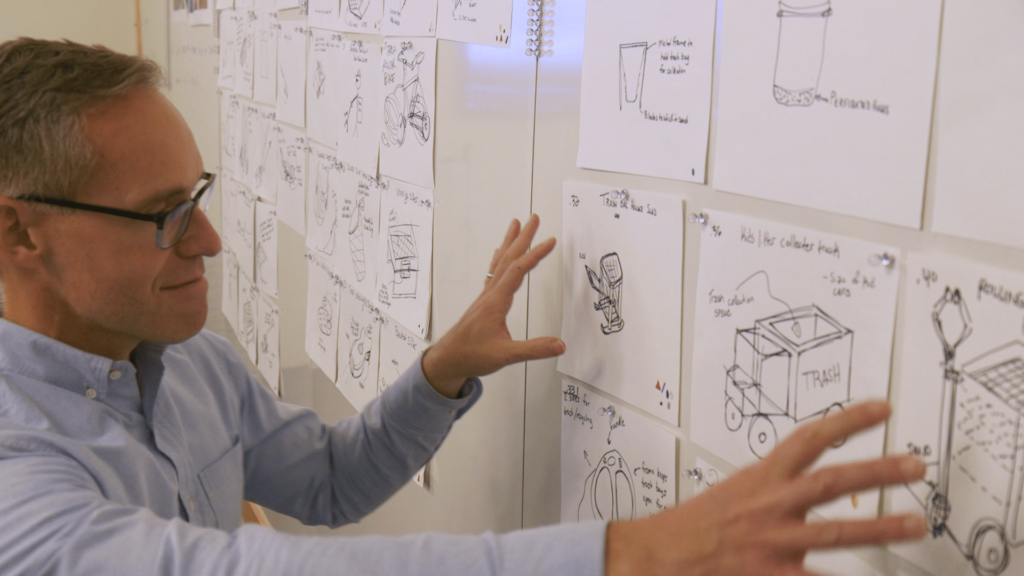
“Wow, I like this idea over here and a certain aspect of this idea over there. Let’s take the seeds of these ideas and combine them to advance toward a full-blown concept. That approach has a lot better chance of nailing the product or solution we want for the problem.”
It’s up to the emcee to evaluate the benefit of additional rounds once creativity has leveled off. Once the team has squeezed every drop of innovation out of their brains, take a moment to categorize concepts into similar groups. What is the main benefit or feature to each concept? Does one concept perform in a similar manner to another design?
Categories featured in our example video include “Portable”, “Affordable”, “Durable”. Assign category names that align with your specific situation then number each concept that the team creates for easy identification.
Andrew usually heads up the sorting of ideas in our sessions since he is more focused on what it takes to move the brainstorming session forward.
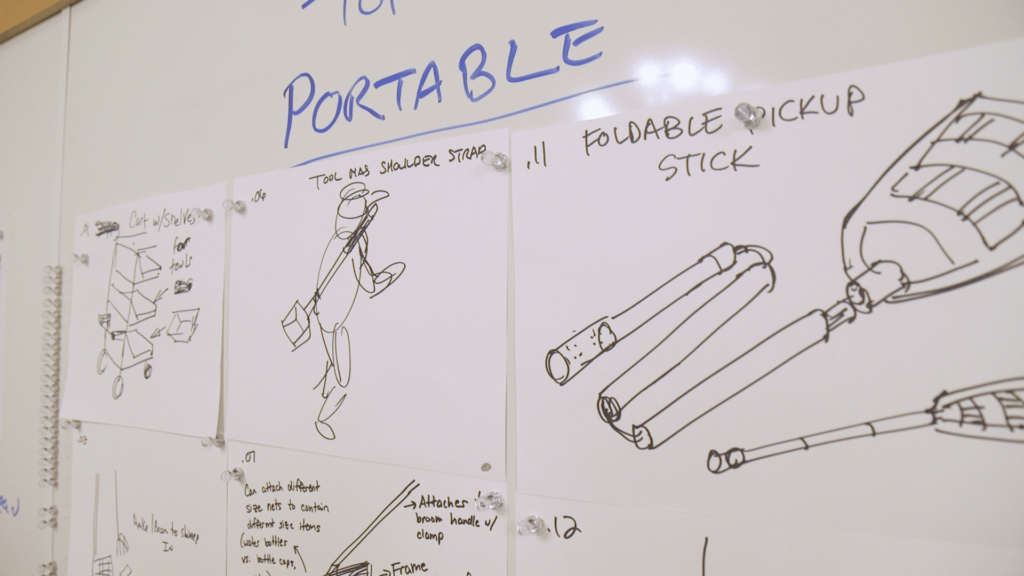
“Gather, sort and group categories so you can start to see a little bit more of a congregation of your ideas. Where are we falling short as a group? Are there any outliers that should be explored a bit more? There may be a common theme within separate approaches that you identify. That may change your direction according to how you want to be actionable afterwards.”
Once you categorize the ideas into groups of favorable attributes, you should have a wide variety of directions for possible solutions. How do you know which to pursue? It’s time for the crucial next step of voting!
6. Vote
At Catalyst, we have a set approach to our brainstorming vote system. Here are the two ground rules that we rarely deviate from in order to get unbiased results from brainstorming sessions.
Voting Rule #1
The group agrees on the number of concepts they can vote for. This number can range widely depending on the level of creative output and complexity of the subject. Each participant gets an equal number of votes. No thumbs on the scales, please!
Voting Rule #2
Conduct two rounds of votes with the initial round being cast anonymously. After everyone has made note of their selection(s), the group publicly records their vote on the actual sketch or concept with initials or a unique identifying mark.
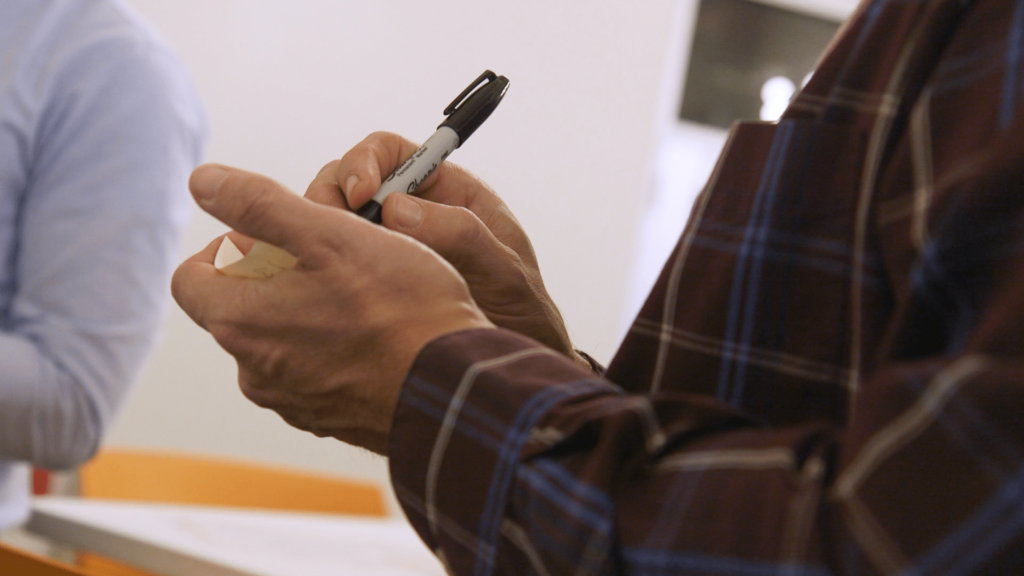
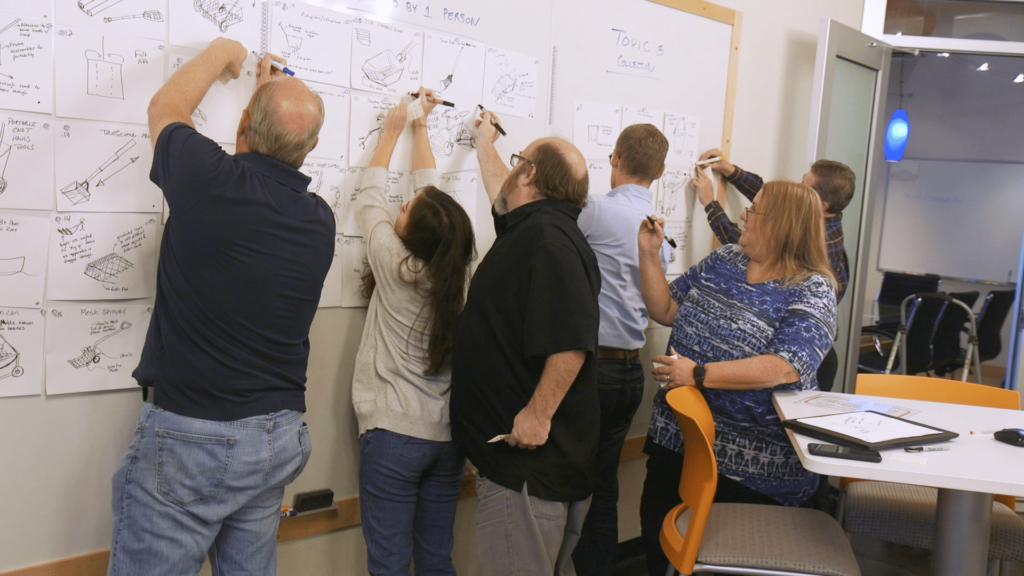
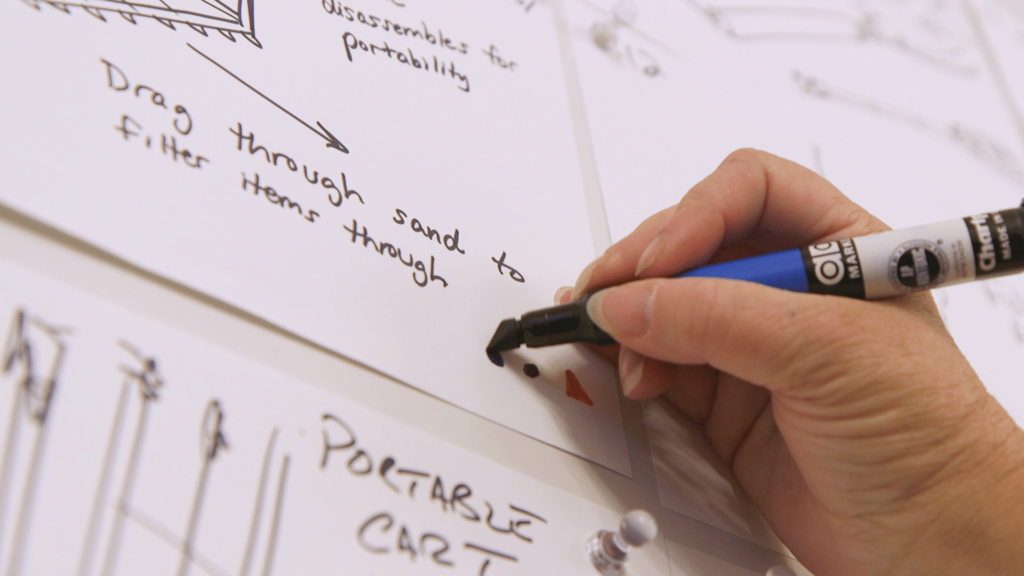
Paul is a big proponent of the anonymous voting rule for good reason.
“We want to take as much bias out of the voting process as possible. You don’t want someone being influenced by their friend or maybe a co-worker who is their superior. Sometimes people feel pressure not to be an outlier which can skew results.”
With a quick tally of the first round of public votes, focus attention on the front runners. Ask people who voted for each concept for their thoughts behind the decision. Sometimes their rationale is obvious but other times you gain unexpected insight from their responses.
After elimination of the weakest performing ideas, a second round of public voting should focus on concepts that show the most promise in terms of actionable items. This can be defined by the level of return or feasibility of execution. A mixture of both may be a happy medium, depending on your specific goals and resources.
7. Assign Next Steps & Action Items
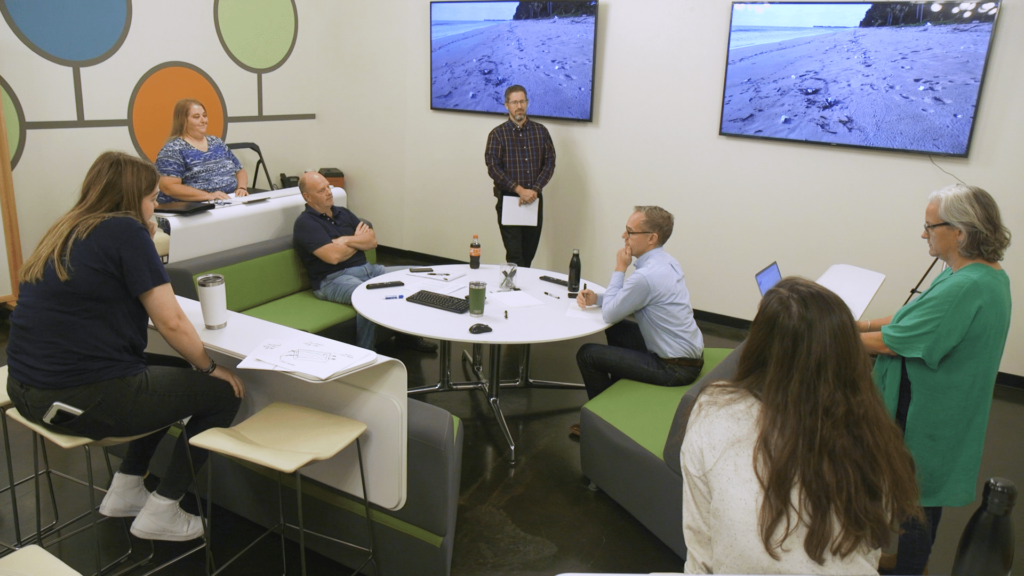
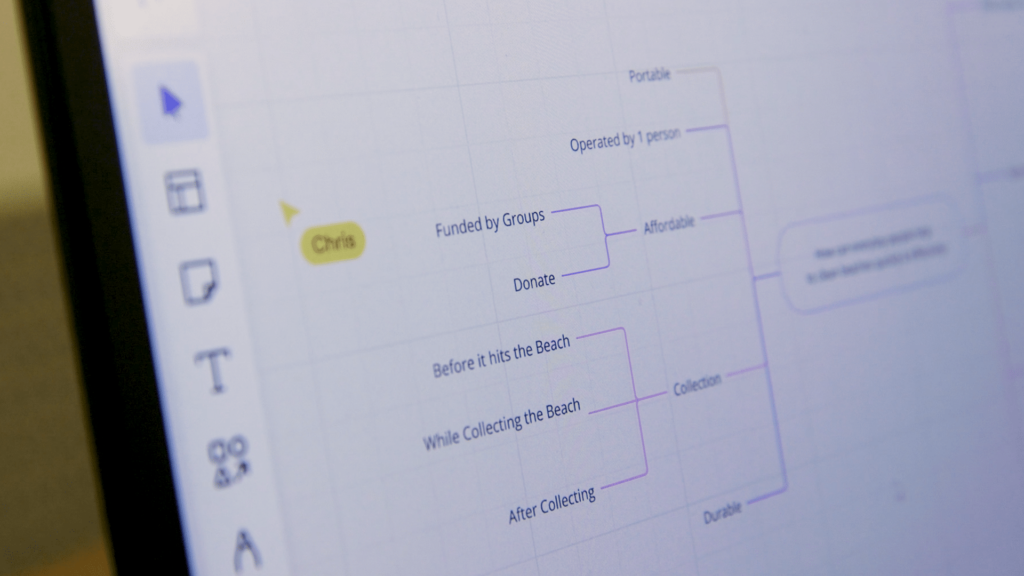
Here is where the record keeper truly shines! After all, what good is a creative brainstorming session if all the hard work is lost? Map thought processes in a Miro Board and digitize drawings by snapping a few pics of each submission. Include the good with the bad. Make sure the assigned number and vote tally are visible for future reference.
Assign specific tasks to team members that align with their strengths and expertise. These assignments can be research into sourcing materials or components, suppliers of like solutions or other appropriate measures. Give a specific timeframe and be clear with expectations so that when the group comes together again, real progress has been made.
By following this 7-step process, you are well on your way to effectively brainstorming toward positive outcomes. Brainstorming is a favorite among the services we provide at Catalyst because of the unique mix of challenge, creativity and teamwork involved. So if your organization gets stuck somewhere along the way, contact us for that much needed spark of innovation. We’re here to help!
